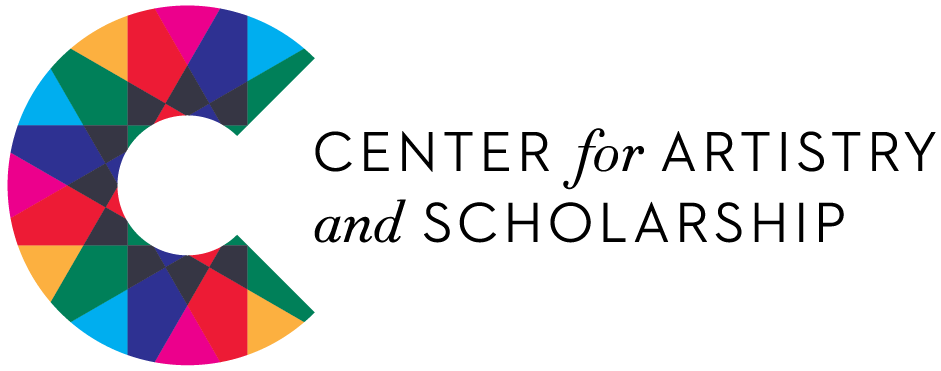"If You Believe, Your Dreams Will Come True"
We are sharing reflections on and excerpts from Center for Artistry and Scholarship’s Executive Director Linda Nathan’s new book, When Grit Isn’t Enough, published October 2017 by Beacon Press. In the book, Linda investigates assumptions that inform our ideas about education today, revealing how these beliefs mask systemic inequity. Drawing from her experiences as the founding headmaster of Boston Arts Academy (BAA) and more than 80 interviews with alumni that she conducted after she stepped down, When Grit Isn't Enough argues that it's time for policy-makers and educators to face these uncomfortable issues. It also explores how we need room for creativity and student-centered teaching and learning to better serve all students, increase college retention rates, and develop alternatives to college that do not disadvantage students on the basis of race or income.
The concluding chapter of When Grit Isn’t Enough challenges the assumption, “If you believe, your dreams will come true.” Linda writes in Chapter Five:
School can be the place where you practice how dreams are realized. School can be where you can build a strong sense of self – an identity that you belong to a special tribe, like artists, or change-makers, or mathematicians or inventors. To ensure that schools incubate future dreams and dreamers, curriculum, structures, and pedagogy must encourage deep engagement both with teachers and with community members. The walls between school and community can and should be permeable.
In addition to analyzing why this particular assumption is damaging to students, this chapter suggests a solution that would also help to heal the inequities of our educational system overall – inequities that are thoroughly examined throughout the entire book. This solution is this idea of making schools not only places of learning, but also collaborative and strong communities where students and teachers support one another. A sense of community will not single-handedly eradicate systemic racism or eliminate barriers to engagement that students of color, ELL, and special education students often face. However, a positive school community can at least be the starting place that provides the support and understanding that is missing from the system and world overall.
At Conservatory Lab, we promote the concept of CREW, which comes from the ethos of Expeditionary Learning, or EL Education. According to the EL Education website, CREW is defined as:
An EL Education school culture is planned for, developed, and sustained through practices that bring the community together, promote shared understandings, and encourage all community members to become crew, not passengers. Students in EL schools are known well and supported by adults. In EL schools, each student is known well by at least one adult within the school. One structure for developing this relationship—and supporting students socially, emotionally, and academically—is crew.
While I was drawn to working at this school for many reasons – the focus on music education, the practice of project-based learning, etc. – the concept of CREW particularly piqued my interest. This was a new idea to me – that community building was not only intentional, but part of the overall curriculum. My experience of middle school and high school was pressure to pass exams and receive high grades. My only sense of community came through my immediate peer group, which was also wrought with challenges (but what group isn’t at that age?), or through participation in various sporting events – either playing or watching. This idea of CREW, however, goes deeper than cheering for your basketball team to win against another school. It emphasizes relationship building, and connecting kids to both one another and to their teachers in order to make them feel like they belong - that they are not alone.
We need to make the idea of CREW – of community building – just as important as high test scores and academic achievements in all schools. In order to build a community, students and teachers must learn to understand one another and must respect one another’s various backgrounds and experiences. If we deliberately build a school culture and create a positive community for students that promotes understanding, students will receive the support they need to succeed. They go from being a number on an attendance sheet to a contributing, integral member of the school “society.”
This is why the arts are so important to schools; they are another essential point of engagement and connection for young people. The arts create community. I have experienced this in my own life as a theatre artist, and I see it taking place daily at Conservatory Lab Charter School. The arts create a sense of identity and belonging, and bring people together to achieve a common goal – that of putting on a play or performing a piece of music. If students begin to feel this sense of belonging in middle or high school, they then understand how valuable this kind of community and connection is to their life beyond high school. This is why colleges must also strive to create similar communities in which students feel supported and understood. Without this, students get lost in college, as the other chapters of When Grit Isn’t Enough prove.
We cannot simply say, “believe it and it will happen.” Achieving one’s goals takes hard work. But that hard work cannot happen in isolation – it is contingent upon not only individual perseverance, but the support of one’s peers and encouragement from teachers and mentors. While it is naïve to say that establishing a school community will solve all of the social inequities analyzed throughout this book, I do think it is the place to start.
Rachel is the Community Liaison for the Conservatory Lab Charter School Foundation, and a theatre artist. In her role at the Foundation, she supports both the Conservatory Lab Charter School and the Center for Artistry and Scholarship.

